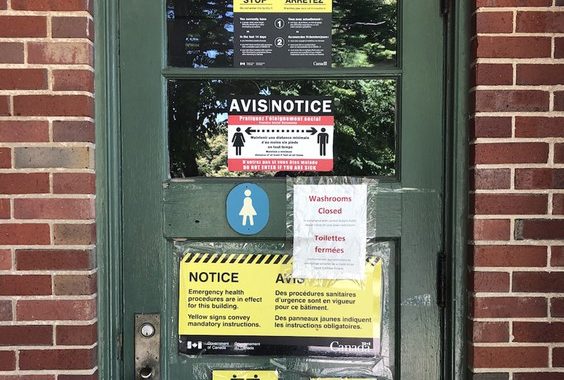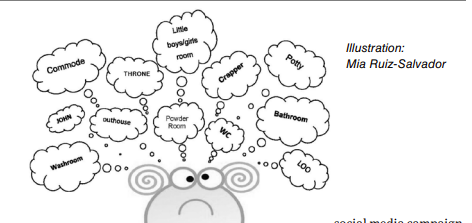A handsfree, self-cleaning bathroom for transit stations, by Eric Jaffe, in the Atlantic CityLab, February 17, 2015. “Atlanta believes it’s found an answer: a high-tech, hands-free, self-cleaning, vandal-resistant, loiter-proof bathroom built to address every mass transit agency concern and offer safe and sanitary service to the fare-paying public. “This is the lowest-cost possible solution for mass transit public restrooms,” he says.
TTC Week: Are more washrooms an urgent matter?, Jack Lakey. February 25, 2015. Toronto Star.
In the process of reopening their subway toilets which were closed due to fears of terrorism after 9/11. BART may provide relief for riders by reopening bathrooms, San Francisco Chronicle, June 24, 2015. Article provides information on costs etc.
Washington, Kate. Before you go: How public toilets impact transit usage. PSU Online Scholars Journal, vol 8, #1, Article 5. 2014. A study of the relationship between public toilet provision and transit use. The article provides many useful references to other studies in other cities, but found that, for Portland, a relationship could not be established as to many other factors were in play.
Changing policy re: toilets in subways in Washington DC, Washington Post, June 7, 2014. “Each new station on the new Silver Line will have its own state-of-the-art restroom facilities. Each station will have four restrooms — two for men, two for women — that will be in plain sight, unlike the majority of Metro restrooms, which are hidden in hallways behind locked, nondescript doors.” (Link available to subscribers only).
The City of Melbourne Public Toilet Plan 2008-2013. The Plan provides the framework to create a network of clean, safe, accessible public toilets in the City. The aims of the plan are to maintain a network of safe, accessible, clean and environmentally sustainable public toilets and to continuously improve the quality of the public toilet stock ensuring toilets are placed at locations that best meet community needs. Public toilets are considered where privately operated toilets do not meet need.
Why Don’t American Subway Stations Have Public Bathrooms? The Atlantic City Lab January 13, 2013: An article on the limited number of open bathrooms on subway lines in New York, San Francisco, Washington DC. Although many have been closed because of operating costs and fear of terrorism since 2011, many are still open. The article enumerates how many are open in New York, San Francisco, Washington DC.
Results of closure of many BART stations post-911. Escalators in San Francisco’s BART transit system shut down after being treated as toilets, July 27, 2012. “People are actually treating the moving stairs as a toilet.”
The Fixer: New TTC washrooms worth the wait, Jack Lakey, February 8, 2012. Toronto Star. TTC washrooms were regarded as smelly, dispiriting hellholes until 2012, when all were refurbished with new fixtures, plumbing, floors and wall tiles, a relieving transformation.



